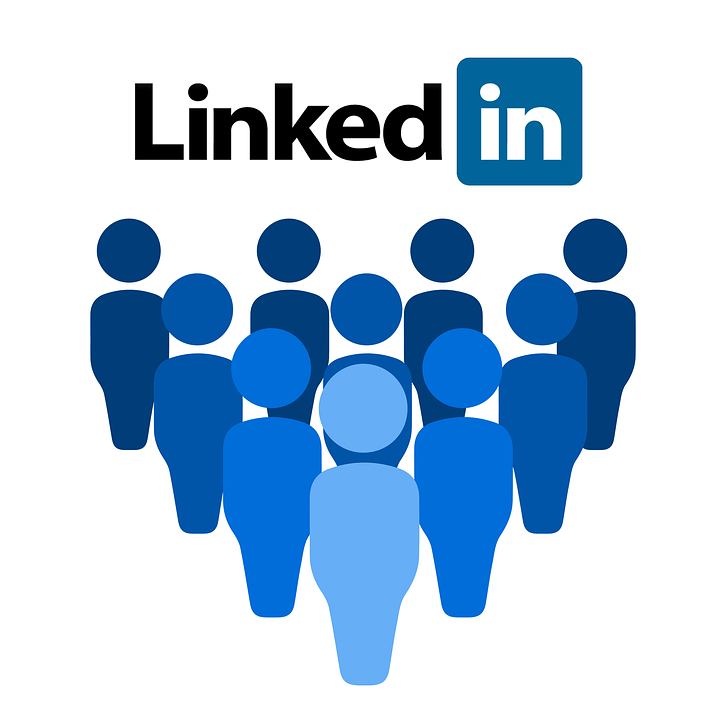Companies market their products every day through advertising, word-of-mouth, and social media. A product’s success often depends on how well it is marketed and presented to customers. Just like Doritos markets its flavored tortilla chips to consumers, it is important to market ourselves in order to build professional networks. We can think of ourselves as a product and begin to consider how we can market ourselves to possible future employers. With a population of over 7 billion people, it is important to make yourself stand out. We believe LinkedIn is a perfect place to start. According to LinkedIn, there are more than 40 million students and recent college graduates registered on the site. As the most prominent professional networking platform, it offers a great way to begin the process of building relationships and linking yourself with the professional world. What are your experiences, skills, and accomplishments? What distinguishes you from your peers? Just as a unique King in focus is sure to stand out in front of a row of uniform pawns, highlighting your singular characteristics can bring you to the forefront of the crowd. This is what LinkedIn allows you do. It lets you transform your relationships into concrete opportunities. Yet, in order to get the most out of LinkedIn, we must take into account the basic steps and considerations of LinkedIn, and that’s what we are here to describe to you.

Making an Informative and Appealing Profile
- Describe Your Education
- Make sure to add both your high school and university information so that your account connects to the official university page.
- Include all high schools/colleges you have attended.
- Highlight Your Experience
- Add all your relevant information, including documents and pictures if they apply.
- Add all important or prestigious jobs.
- In the descriptions, explain what you accomplished while you were at that job.
- Be sure to include all volunteer experience, as most employers value this type of experience.
- Show Your Accomplishments
- Fill out the summary field with your best accomplishments.
- Honors and Awards: include nationally recognized awards such as National Merit or AP Scholar Awards, as well as college-specific awards such as the Dean’s List or a research award.
- Languages: Make sure to include any languages you know and your level of fluency with them. Knowing a language can sometimes single-handedly land you a job.
- Demonstrate Your Skills
- Add any relevant skills you have. Later on, your connections can endorse you for these skills if they feel they can vouch for your abilities.
- Most people begin by listing some common skills like public speaking, Microsoft PowerPoint, and leadership. Make sure you put down leadership! Every student has that ability, and it can help round out your profile.
- Polish Your Brand
- Add a professional (or at least professional-looking) headshot: Photos are the first impression your potential future employer receives, so make it count. According to Forbes, profiles with headshots get 21 times more views.
- Include your location (so employers can determine if you are in their area). People will also use this as a way to confirm that you are who they think you are. There are a lot of John Smiths on LinkedIn, but there are fewer John Smiths from Columbia, Maryland who attend the same University as you.
- Determine your headline. Do you want it to say “Student at xyz University” or “Intern at xyz Company”? You have options, decide what you want people to identify you as at first glance. Make it informative, but also keep it succinct and professional.
Expanding Your Network
- Join a University Alumni Group (if applicable)
- Practically every full-time University has an extensive Alumni page that displays the profiles of Alumni using LinkedIn. You can use this page to connect with these alumni and also to see certain job openings at the actual University.
- Join a High School Alumni Group (if applicable)
- Many high schools are not large enough to justify an official alumni group, but if yours does, be sure to join it!
- Connect with people via email
- Email contacts can be easily imported into LinkedIn. Once you have these connections, LinkedIn will suggest people that you may know based on your experience, connections, education, and location. Getting these first connections is essential to starting your network.
- Ask for introductions
- If for some reason you need to reach out to a second-degree connection (someone who is connected to one of your connections), there’s an easy button that lets you ask your mutual connection to introduce you. This can be helpful for trying to get your foot in the door.
- Make Yourself Findable
- While it is extremely beneficial to connect with people you already know, sometimes random connections can provide quality opportunities. First of all, make sure your profile is public so that curious viewers are not turned away. Additionally, copy your unique LinkedIn URL and paste it in other social media sites to help gain exposure.
Now it’s your turn! Click on the link to begin on one of your largest career steps. https://www.linkedin.com
And for more information, be sure to check out http://www.leisurejobs.com/staticpages/18285/the-ultimate-linkedin-cheat-sheet/ which provides you with more tips and tricks to navigate LinkedIn.
Questions, comments, concerns? Let us know in the comments section below! We’d love to hear about your experiences as you take on the world of marketing and LinkedIn.


LinkedIn is a good way to connect with people in the business world. It is a good way to advertise your skill sets to peers and future employers. For example, my dad is in the process of hiring somebody out of college for his firm, and he has used LinkedIn in his search. People that do not have one would be at a disadvantage if they were trying to apply for this job. Something that is missing from this article is that there are groups that you can join that have to do with your interests like Financial Services Regulation and Investment Management and Portfolio Analysis. Joining a group like this would allow you to keep up with what’s going on in your fields of interest, show interest to a potential employer, and possibly network. Also, the website has a place for Skills and Endorsements and another for Recommendations. These are helpful because if you had worked somewhere or had an internship, a recommendation could be written from these and seen by others.
LikeLiked by 2 people
Wow! Great comment. I think you make a great point with the benefits you mention in joining Linkedin groups. You also bring up another useful feature with the Skills, Endorsements, and Recommendations pages. We appreciate your constructive criticism very much. We were not able to include all the useful features of Linkedin in order to keep the article concise, but if we make a more detailed version of this article, we will be sure to include those features and much more.
LikeLike
Great job outlining the benefits of LinkedIn! I feel like I am not fully using my resources to my advantage so I will start one today.
LikeLiked by 1 person
Thank you for your comment! We are glad to be able to help you.
LikeLike
I really enjoyed this article because it made LinkedIn feel approachable to anyone. Is there anything specific that an Arts & Letters student should do specifically to market oneself?
LikeLiked by 1 person
Thank you for your comment! As an Arts and Letters student, make sure to highlight the skills you have gained through your college that sets you apart, such as exceptional reasoning skills, etc. In addition, adding a writing sample to your profile will also help you stand out. The most important aspect is to network. Do not be afraid to reach out to others. Hope this helped!
LikeLike
This was a great blog about the advantages of LinkedIn! It was incredibly useful on how to market myself to potential employers. Thank you for the help! I would be nowhere without this.
One question: What are the benefits of LinkedIn versus Facebook?
LikeLike
Linkedin is really designed for the work environment, while Facebook is designed for the social environment. My main recommendation for Facebook would be to make sure nothing you post could be viewed as offensive by any potential employer. This may seem very obvious, but just one offensive post can have very serious consequences. Thanks for commenting Bill!
LikeLike
As someone who’s just started using Linkedin, I found this blog really helpful! My only question is, as I’m beginning to reach out to people, what is the ideal network size that I should shoot for?
LikeLike
Thank you for your comment! This is a great question. Some factors to keep in mind about your LinkedIn network size are amount of spam, marketing audience, introduction effectiveness, and time commitment. The bigger your network is, the more spam there will be and bigger the time commitment. However, your marketing audience will be bigger, which means more introductions. We would recommend that your network include mostly the people you know to ensure that spamming will be kept to minimum, while maintaining a big enough marketing audience to network effectively.
LikeLike
What if your GPA isn’t as good, or if you just don’t have enough connections?
LikeLike
LinkedIn allows you to highlight every aspect of yourself, not just your GPA. Therefore, even if your GPA is not as good, make sure you emphasize the other areas in your life in which you achieve in. In order to build more connection, connect with your Alumni network and attend career fairs and networking events.Thank you for your comment! We post every Friday, so please come back next Friday to read another informative blog post!
LikeLike
After reading this post, I feel that it would be beneficial for me to create a LinkedIn account.
LikeLike
Thank you for the comment! We are happy to help you on this journey of your life. We post every Friday, so please come back next Friday to read another informative blog post!
LikeLike
yet you still have not done so…
LikeLike
I can see how this can benefit me even at the high school level. Thanks for the information!
LikeLike
Thank you for the comment! We post every Friday, so please come back next Friday to read another informative blog post!
LikeLike
My mom always tells me to create a LinkedIn account and now I see why! It’s a great networking tool and you can see marketing at work!
LikeLike
Thank you for the comment! We agree with your mom and we definitely think you should give LinkedIn a chance.
LikeLike